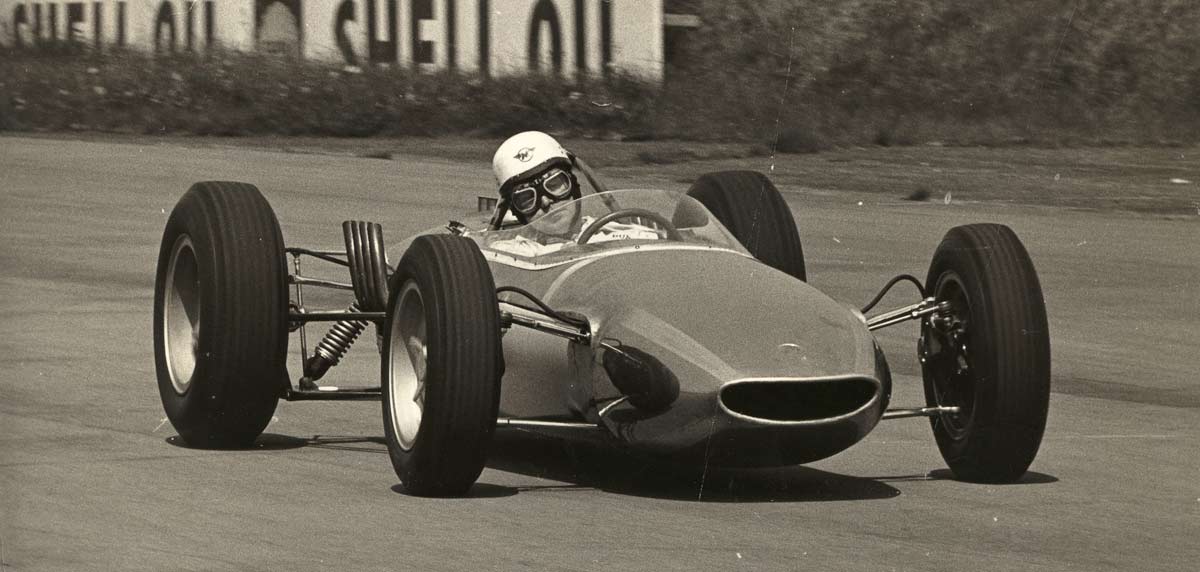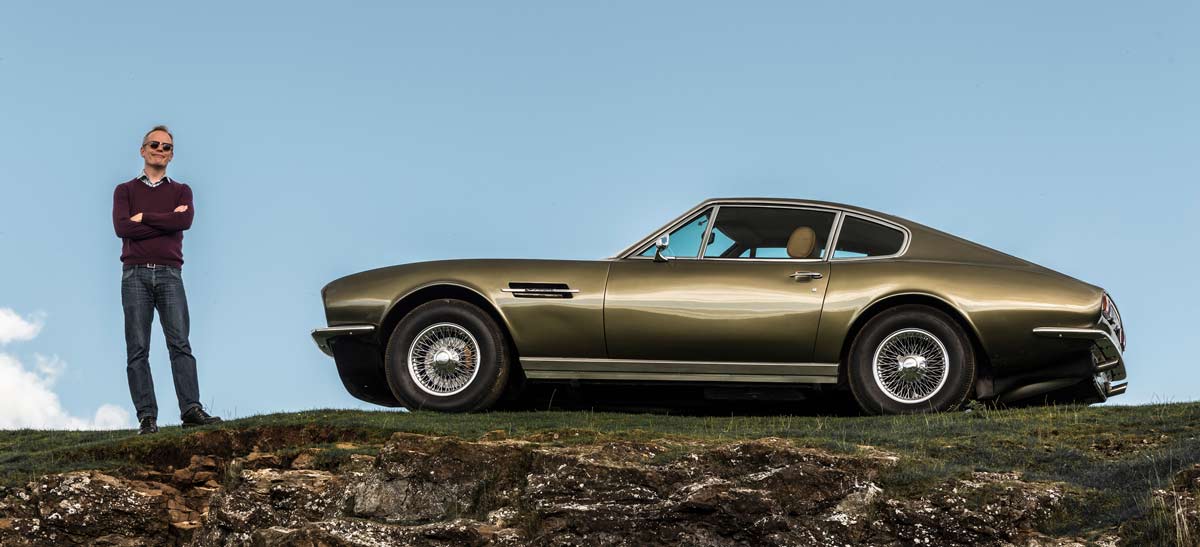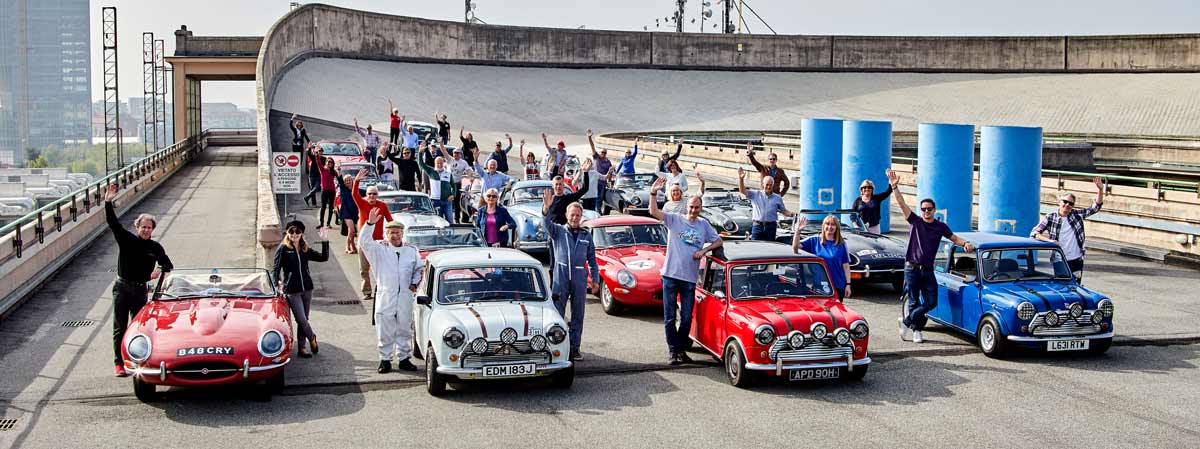
BRP’s Indianapolis Swan Song, part 1
BRP’s Indianapolis Swan Song by Ian Wagstaff
‘I like to be in America’ – Leonard Bernstein, West Side Story
The British Racing Partnership can be recalled as an equipe of historical significance. Its tenure, which lasted from 1958 to 1965, was short but, in being the first Formula One team to be fully sponsored, it pioneered a commercial approach that can still be seen in F1 today. Unfortunately, the politics of the Formula One Constructors' Association (FOCA) preventing it from benefitting from this. It was forced out of Grand Prix racing at the end of 1964 but there was to be one last fling – it built two cars for the Indianapolis 500.
Part 1
Before the British Racing Partnership closed the doors at its Highgate workshop for the last time, there was a brief period which, said co-founder Ken Gregory, probably gave him more pride than anything else that BRP had achieved. Although the foray into Formula One, that he had run in partnership with Stirling Moss’s father, Alfred, was at an end, Gregory had decided to keep the operation going for a while. It was a wise move as it happened for, in late 1964, one of its former Grand Prix drivers, the American Masten Gregory approached BRP with a request that it build two machines for the following year’s Indianapolis 500.

Above: All set to go, George Bryant’s BRP team at Indianapolis in 1965. Behind the car (left to right): Roy Wiley, Quinn Epperley. Howard Gilbert, George Salih, ‘Frenchy’, George Bryant, George Woodward, Jim Chapman, Whitey Paddock and Jack Ventura. In their cars (left to right): Johnny Boyd, Masten Gregory (Courtesy George Woodward)
Unknown to the rest of the team at the time, the bespectacled Kansas driver had originally had a meeting with mechanics George Woodward and Jim Chapman about wanting a new Indy car from one of the British manufacturers and whether they were capable of building it. ‘We had a good relationship with Masten,’ Chapman recalls. He feels that Gregory was loyal to his mechanics in a way that was different from the European drivers he had worked with. ‘He needed to bond with the people who were looking after his car. In that way he felt safe and comfortable. The British drivers were more standoffish; it was like a class separation.’ Masten had been less than pleased when Jim had been taken away from his Formula One car and moved on to Innes Ireland’s. ‘He was really pissed off and did not care who heard what! It was pretty embarrassing for me.’

Above: The men behind BRP (left to right): Tony Robinson, Ken Gregory and Alfred Moss. (Courtesy Tony Robinson)
‘[Gregory] had talked his former stepfather George Bryant – who ran a mail order business out of New Jersey - into sponsoring two Indy cars,’ remembers Woodward. ‘He asked if I could draw an Indy car based on the 1964 BRP Formula One although it would obviously have to be larger. Jim and I agreed that we could do it. He instructed us we must not tell anybody about the project, although Bryant and he would be travelling to the UK for a meeting with Ken Gregory.’ At that stage, Masten reckoned he was faced with a choice of going with Brabham, Lotus or BRP but decided upon his old F1 team, meaning that Woodward and Chapman would be able to stay with their employer a little longer.
Says Jim Chapman, ‘At the time, no-one from BRP had ever been to Indy or even watched an Indy car run in competition. Agreeing to build such a car, we were rather tongue in cheek.’

Above: BRP built three Formula One cars before the two Indy contenders. Tony Robinson carried out shakedown tests in the original at Silverstone. (Courtesy Tony Robinson)
Tony Robinson recalls, ‘Masten asked us if we would be prepared to build him a car for Indianapolis at the end of 1964 when we were thinking of closing down. He had driven for us in Formula One and we had always had a good working relationship with him. He was a very sensible driver. However, we kicked the idea around before saying we could and we would.’
Alfred Moss, who himself had raced at Indianapolis in 1924, finishing 16th, in a Ford-based Barber-Warnock Special, was, perhaps understandably, said to be pleased by the thought of BRPs running at the imposing, 2.5-mile Speedway. (‘Poppa’ was also relief driver for Herb Jones at the 1925 500. Sir Stirling recalled that his father was referred to as ‘the Earl of Moss’ at the Speedway in those days!)

Above: BRP co-owner, Alfred Moss competed at Indianapolis in 1924, finishing 16th in 1924 in a Barber-Warnock Special. (Indianapolis Motor Speedway)
With the exception of wartime, the Indianapolis 500 had been run continuously since 1911. British manufacturers had been few and far between in the early days, with Sunbeam almost a regular between 1913 and 1921 and Bentley entering a lone car the year after. Nearly four decades then followed before any British chassis again sat on the Indy grid. The early 1960s, though, saw the start of an explosion that would eventually see every car in the field built in England. Cooper had been the first to dip in the proverbial toe in 1961 using what was essentially a beefed up Grand Prix engine. The startling thing about the Cooper, as far as the Americans were concerned was the fact that the engine was behind the driver. (It was also painted green, which did not amuse them as they felt that colour to be unlucky. Jim Chapman recalls how he had to change a green electric lead on the instructions of the superstitious Johnny Boyd.) Such a thing had never been seen at the Indianapolis Motor Speedway before. Other British manufacturers Lotus, Brabham and, albeit with a front-engined car, Ferguson followed in 1963 and 1964, the first-named famously winning in 1965…with a green car. It was also, arguably, 1965 that first established the UK as the primary source for an IndyCar chassis. While Lotus and Brabham mainly entered factory cars, BRP and fellow newcomer Lola produced customer chassis for that year. Lola continued to a point where 28 cars of the cars on the 1991 Indy 500 grid came from its factory at Huntingdon. BRP’s involvement with the track was, by contrast, brief but both were part of a pioneering movement: the first British manufacturers to build customer Indy cars as opposed to racing factory ones. BRP and Lola heralded a movement that would see British production racecar manufacturers change the way in which Indy cars were sourced, totally dominating the event throughout the latter part of the 20th Century. By 1986 every car on the Indianapolis 500 grid was built in Britain.

Above: Job done. The first of the Indy cars is ready to leave Highgate. Masten Gregory sits in the cockpit while behind him are the men responsible for building the car (left to right): Bruce Macintosh, Jim Chapman, George Woodward, Tony Robinson, Peter Downie and Stan Collier. (Courtesy Tony Robinson)
‘There was no reason not to do it,’ says Robinson. ‘We had the staff and the facilities, and “half an idea” of what we were doing. I still had to go to North America for the end of season US and Mexican Grands Prix so “nipped over” to Indianapolis (in the October) and picked up the regulations.’ It all seems so simple, but as Cars Illustrated magazine said at the time, the BRP team was working with ‘too little time and too little exact information’. Back in Highgate, ‘they knew the date of the race, the identity of one of the drivers and the type of engine involved – and that was about all’.
Robinson stayed in a motel where he listened to the chatter of the local mechanics some of whom, he thought, ‘didn’t have a clue what they were talking about’. He then visited the track office to collect the paperwork but confesses he never actually looked at the Speedway, itself.
Tony continues: ‘I also went to Ford Motor Co in Detroit to see those in charge of the Ford Indy engine project and collate what information we needed. We organised a mock-up engine that was shared between ourselves and Lotus and Lola, and also acquired a full-sized drawing of the engine.’ The mock-up was due to be shipped to Highgate for the first week of November but did not arrive until late that month.
Robinson needed far more than just the measurements of the engine. Details of the oiling and watering systems were required, as was a cross section of the radiator, the weight of the engine, its fuel and oil consumption, maximum rpm and torque, the requirements of the exhaust system and, importantly, the delivery date.
Ask Robinson about the design of the car and he will reply that it was built rather than actually designed. ‘We were a team of mechanics and engineers. We weren’t designers as such with a pen and paper; we were racecar builders.’ Chapman points out that BRP had been formed to race cars built by others and perhaps did not have the technical background to really be a manufacturer. ‘It was one of the big weaknesses in our team.’
The majority of the drawing was carried out by George Woodward, ‘Upstairs,’ recalls Jim, ‘outside the ladies’ toilet where there was the only bit of board we had with a sufficient angle to draw on. (After Rod Gueran had left, George had taken over much of the drawing work.) Says Chapman, ‘It is important to remember that the BRP business had been based on purchasing racecars as a racing team. We had not been equipped to manufacture complete cars. All the monocoques that we made were completely hand-built; we had no sheet metal shears or folding equipment. It was mostly cut by hand and folded over one-inch steel bars. The jigs were all made in-house.
‘It was very labour intensive. We just worked more hours and we did not mind doing that. None of the cars was started with a detailed design – this happened as we proceeded through the various stages of build - but the talents of a very small handful of people made it all happen.’
Robinson says that the team knew what was required, something that it had found out through experience. ‘We just laid down an idea – how long and wide it would be, what tyres we were going to use, what the brakes would be. Over the years you get to know what to do without trying anything ambitious. If you have an idea of what not to do and what mistakes you should not make, you can end up with a car that may be as quick as the others, if not a little bit quicker and, most certainly, more reliable.’
In addition to Woodward, Chapman and Robinson, the others working on the BRP project were the young Bruce McIntosh; Stan Collier, ‘a bit of a wizard on suspension’ said Cars Illustrated, and the team’s ‘court jester’ Peter Downie. Tony admits that nobody at BRP had any experience of Indy and that they gleaned most of their information from books on the subject. However, other than such as the obvious like the Girling brakes, Armstrong shockers, Halibrand wheels and a standard Morris rack-and-pinion steering, everything was designed or manufactured by the team. (Unusually, the wheels were of a 5-window configuration. Most Indy car wheels at the time had six openings.) Even the driveshafts were designed by BRP but made by BRD of Wolverhampton.
Click the following link for BRP's Indianapolis Swan Song, part 2
Click the following link for BRP's Indianapolis Swan Song, part 3
Books written by Ian Wagstaff






Leave a comment
This site is protected by hCaptcha and the hCaptcha Privacy Policy and Terms of Service apply.